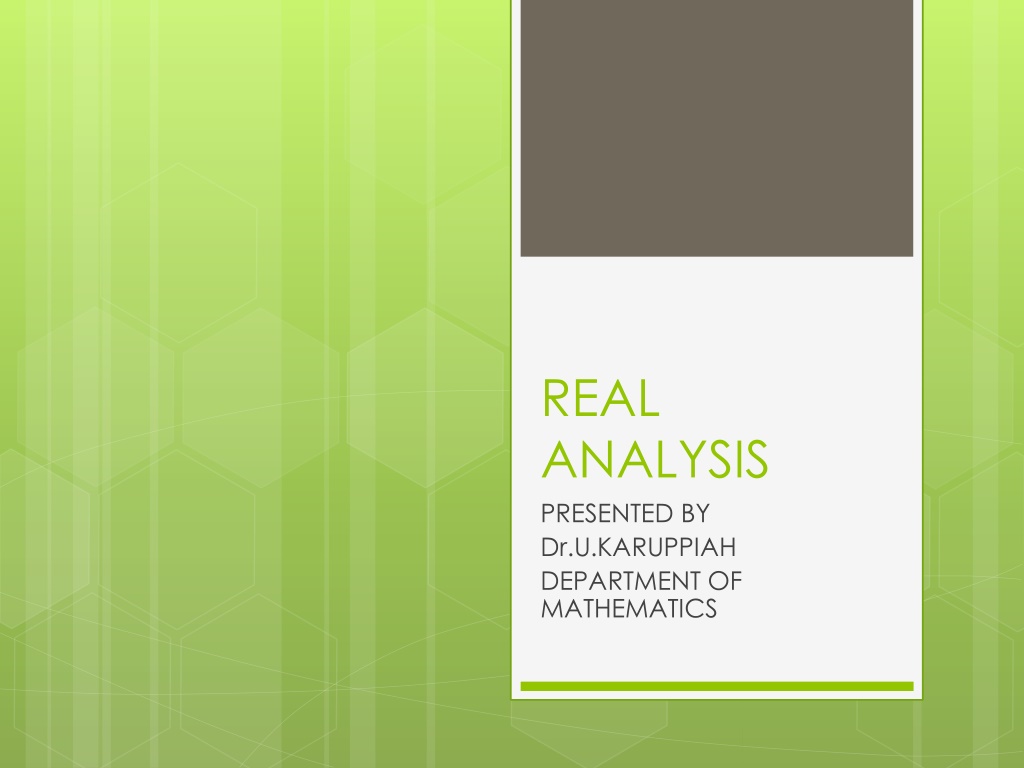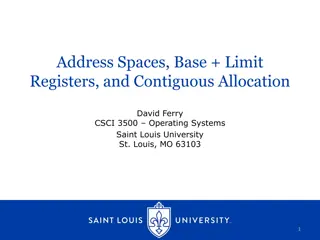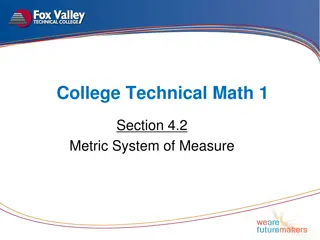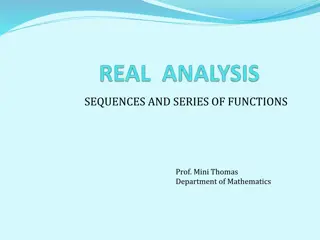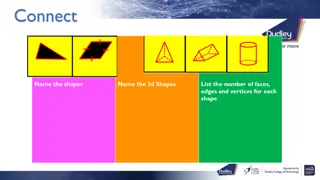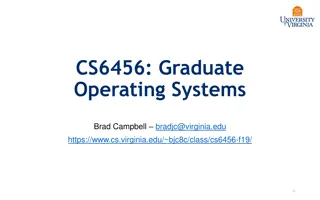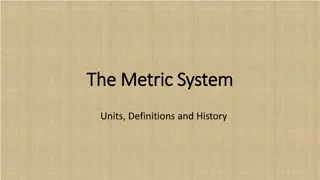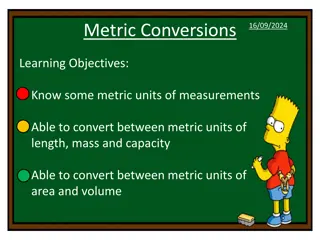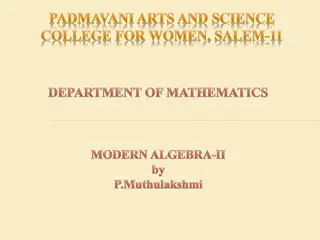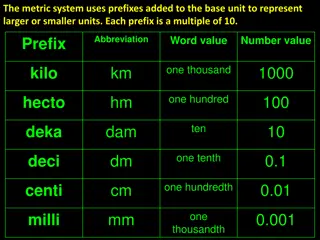Understanding Real Analysis: Definitions and Examples in Metric Spaces
Presented by Dr. U. Karuppiah, this informative content delves into the fundamental concepts of metric spaces in real analysis. It covers definitions such as the metric space, symmetry, interior points, and open sets, along with examples illustrating these concepts. The content explores the properties of metrics, neighborhood of a point, and the distinction between interior points and open sets in a metric space.
Download Presentation

Please find below an Image/Link to download the presentation.
The content on the website is provided AS IS for your information and personal use only. It may not be sold, licensed, or shared on other websites without obtaining consent from the author. Download presentation by click this link. If you encounter any issues during the download, it is possible that the publisher has removed the file from their server.
E N D
Presentation Transcript
REAL ANALYSIS PRESENTED BY Dr.U.KARUPPIAH DEPARTMENT OF MATHEMATICS
METRIC SPACE DEFINITION:METRIC Let X be a non empty set. Define d:X X . Then d is said to be a metric on X if it satisfies the following conditions Non negativity: d(x,y) 0 for all x, y ? Definiteness: d(x, y)=0 iff x=y Symmetry: d(x,y) = d(y,x) Triangle inequality: d(x,y) d(x,z) + d(z,y) for all x, y, z X
DEFINITION: METRIC SPACE A non empty set X along with the metric d on X is called Metric space. It is denoted by (X, d) or simply X. Example: Let X = . Define d: by d(x, y)=|x y | for all x , y To check: d is a metric on . Non negativity: d(x,y) = |x y | 0 Definiteness: d(x, y) = 0 |x y | =0 x y =0 x = y
Symmetry: d(x, y) = |x y | = | -(y x)| = |y- x | = d(y , x) Triangle inequality: Consider d(x,y) = |x- y| =| x z + z y | = |(x-z) (y-z)| = |(x-z) + (z-y)| |x-z| + |z-y| =d(x,z) + d(z,y) for all x, y, z
Since d satisfies all the axioms of the metric. Hence d is the metric on called Usual Metric or Standard Metric. Definition: NEIGHBOURHOOD OF A POINT Let (X,d) be a Metric space. Let p X , then a neighbourhood of a point p is a set ??(p) defined as ??(p) = { x X : d(x,y) < r}. The number r > 0 is called radius of ??(p).
DEFINITION: INTERIOR POINT Let (X , d) be a metric space. Let E X. Let p E. Then p is said to be an interior point of E if there exists a neighbourhood??(p) such that ??(p) E. EXAMPLE: Let X = E = = { , -2,-1,0,1,2, } . W.K.T Neighbourhood of x =??(x) = (?-? ,?+?) For ? = 2,The neighbourhood of -1 = ( -3, 1) . That is, we cannot find any neighbourhood of any integer which is contained in . Therefore has no interior points.
EXAMPLE OF INTERIOR POINT: Let E = (2 , 6) . All reals between 2 and 6 are interior points. DEFINITION: OPEN SET Let (X , d) be a metric space. Let E X. then E is said to be an open set if every point of E is an interior point. EXAMPLE OF OPEN SET: Let X = , with usual metric. Let E = (-1 , 5) Points of E = all reals between -1 and 5 Interior point of E = all reals between -1 and 5 Therefore E is open. In General, Every open interval is open.
Let E = (0, 5) {7} Points of E = all reals between 0 and 5, 7 Interior points of E = all reals between 0 and 5. Therefore E is not open. Let E = [1 , 5] Points of E = 1, 5 and all reals between 1 and 5 Interior points of E = all reals between 1 and 5. Therefore E is not open.
Theorem: Every neighbourhood is an open set. Proof: Let (X , d) be a Metric space. Let p X. Let ??(p) be an arbitrary neighbourhood of p, r > 0. To prove: ??(p) is an open set. i.e.,to prove : Every point of ??(p) is an interior point.
Let q ??(p) To prove: q is an interior point of ??(p) . Let d(p, q) = h (h > 0, h < r ) ..(1) Let ?? (q) be a neighbourhood of q. To prove: ?? (q) ??(p) Let x ?? (q) Now to prove: x ??(p) now x ?? (q) d(x, q) < r h ..(2)
Consider d(x , p) d(x , q) + d(q , p) (by triangle inequality) < r h + h = r (by (1) & (2)) d(x , p) < r x ??(p) Therefore we have ?? (q) ??(p) i.e., there exists a neighbourhood of q which is contained in ??(p). q is an interior point of ??(p).
Since q is arbitrary, every point of ??(p) is an interior point. ??(p) is an open set and since this is an arbitrary neighbourhood. We can say that every neighbourhood is an open set.
DEFINITION: LIMIT POINT OF A SET Let (X , d) be a metric space. Let E X. Let p X. Then p is said to be a limit point of E if every neighbourhood of p contains atleast one point of E other than p. DEFINITION: DERIVED SET The set of all limit points of E is called derived set of E. It is denoted by ? .
EXAMPLE: Let E = ( -1 , 10] Limit points of E = -1,10 and all reals between -1 and 10. ? = { -1,10, all reals between -1 and 10} = [ -1, 10] Let E = (1,5) {5} Limit point of E = 1,5, all reals between 1 and 5.
DEFINITION: CLOSED SET Let (X , d) be a metric space. Let E X. Then E is said to be closed set if every limit point of E is a point of E. EXAMPLE: Let E = [0 , 1] Limit points of E = 0, 1, all reals between 0 and 1. Points of E = 0, 1, all reals between 0 and 1. Therefore E is closed. In General, every closed interval is a closed set.
DEFINITION: COMPLEMENT OF A SET Let (X , d) be a metric space. Let E X. The complement of E is denoted by ??and is defined as ??= { ? ? ? ? } EXAMPLE: Let ( , d) be a Metric space. ?= , ?=
THE RELATION BETWEEN OPEN AND CLOSED SETS Theorem: A set E is open iff its complement is closed. Proof: Necessary part: Let E be open. To prove:??is closed. Let p be a limit point of ??. It is enough to show that p ??.
Since p is a limit point of ??, every neighbourhood of p contain at least one point of ??other than p. No neighbourhood of p is contained in E. p is not an interior point of E. But E is open. p E p ?? Since p is arbitrary,we can say every limit point is a point of ??. Therefore ??is closed.
Sufficient part: Suppose ??is closed. To prove: E is open. Let p E (arbitrary). To prove: p is an interior point of E. Since p E which implies p ??. But ??is closed. p is not a limit point of ??. there exists a neighbourhood N of p which contains no point of ??.
Which implies that a neighbourhood N of p such that N ??= i.e., a neighbourhood N of p such that N (??)?=E a neighbourhood N of p such that N E p is an interior point of E. Since p is arbitrary, every point of E is an interior point of E. Therefore E is open.
